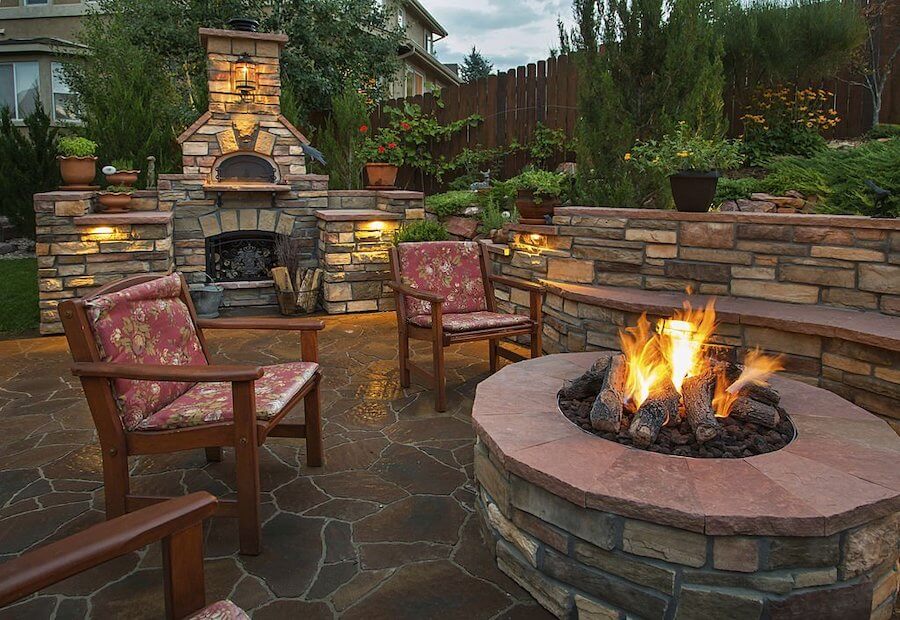Fire pits are one of the most popular outdoor living utilities. You can use them for purposes, such as warming up, grilling food, or having a night at a campfire.
Of course, these fire pits are useless without the right fuel. You might wonder, “What fuel do you use in a fire pit?” If so, scroll down now to get our top picks!
Table of Contents
What Fuel Do You Use in a Fire Pit?
If you’re looking for the best fuel for a fire pit, choose one of these eight options:
- Firewood
- Wood Briquettes
- Charcoal
- Propane
- Gel Fuel
- Natural Gas
- Smokeless Fuel
- Ethanol and Bioethanol
Firewood
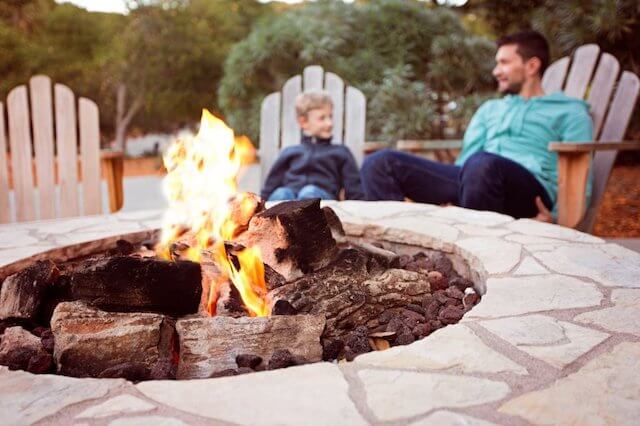
Firewood is the most popular fuel and also the most preferred for good reasons. Here are the main benefits you can get from wood-burning fire pits:
- Feel
- Aroma
- Classic look
- Cheaper
Hardwoods such as beech and ash are popular choices. In addition, the aroma and flavor of hickory and apple woods are very addictive.
However, these fire pits can cause many problems in the city and urban settings.
They also emit more smoke (which may be toxic in closed areas) and are one veritable fire hazard.
The good news is that there are alternatives that are better and safer.
Wood Briquettes
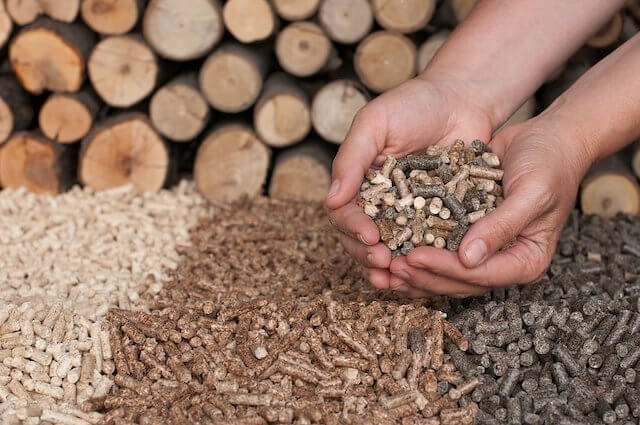
It is a wood-based product that is better for the fire pit and environment. Wood briquettes come in wide varieties and are easy to find in stores.
One of the things that you need to keep in mind is that their moisture content is less than 10%.
The general rule of wood burning is that smoke production will be high if the moisture content is higher than 20%, meaning briquettes are an excellent alternative to wood.
These briquettes are also dense, allowing them to burn longer and create more consistent heat than regular wood.
This option is also smokeless and makes fewer pollutants, meaning they are environmentally friendly.
Wood briquettes are also easy to handle. Their availability is high, and the setup and maintenance are as easy as normal wood.
Gel Fuel
For easy installation, portability, and operation, gel fuel fire pits can be an excellent choice. It is easy to find DIY posts and videos on building small fire tabletop fire pits that use gel fuel.
Gel fuel involves isopropyl alcohol in 13 oz cans, selling for about $3 per can. A fuel can will last for two hours and more.
To form the fire, just put the gel fuel can inside your fire pit before peeling the label, opening the top of this can, and setting a fire. Then you will get clean heat that is spotless and smoke-free.
Some gel fuel products feature mixed organic matter to produce popping and crackling effects like wood-burning fire pits.
Natural Gas
Natural gas is an environment-friendly fuel that can run continuously without much fuss and pose a fire hazard.
In the natural state, the methane fuel is odorless, though an odor might be added later to ensure that you can detect leaks.
The initial installation might be costlier than wood fire pits and requires one natural gas pipeline. Natural gas is also one of the most affordable options.
Propane
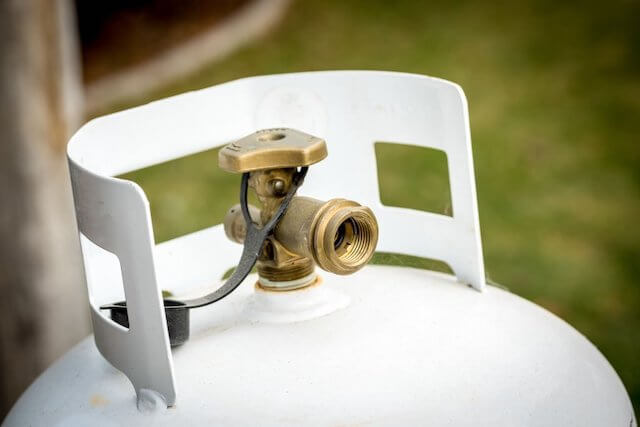
It is supplied in tanks instead of through a pipeline, making it more convenient to fuel a fire pit.
Propane is one of the “clean” fuels, like natural gas, that doesn’t emit toxic chemicals, carbon dioxide, or carbon monoxide.
There are some benefits to using propane for fire pits. First, it is easy and fast to light the fire. Second, propane tanks, often utilized for grills, are easy to purchase at groceries or gas stations.
Propane tends to be more expensive than natural gas. It also burns cleaner than firewood, making it ideal for the environment and better for people sensitive to air quality changes.
Smokeless Fuel
Smokeless fuel is produced by combining low-sulfur coal (lower than 2% sulfur content) with Anthracite and Petroleum coke. It is available as smokeless ovals and briquettes.
This fuel type is useful in crowded urban areas where a lot of cooking is done outside. It can prevent the smoke from impacting others and protects the environment simultaneously.
Charcoal
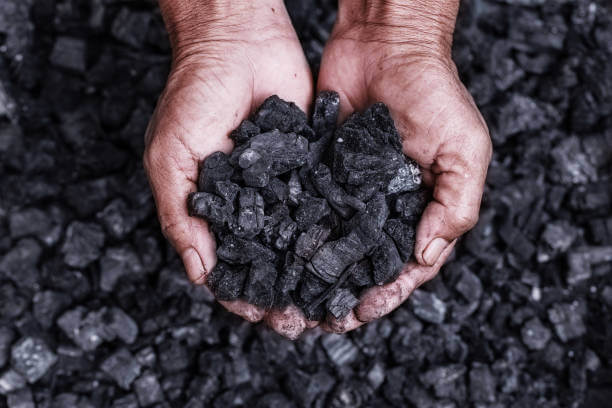
If you need to get the conveniences of wood fire pits and want to avoid their drawbacks, hardwood charcoal is the one to get.
Charcoal refers to basically wood that was pre-burnt in one oxygen-free environment. It is an excellent option for those who need to control heat (such as if you want to cook or barbecue outdoors).
Charcoal is also available in wide varieties, such as “pressed” charcoal, which is made of wood pieces mixed with seeds and other materials. It is prevalent and is odor- and smoke-free.
If you prefer some aroma, mixing pressed charcoal with smoking woods such as hickory is okay. In addition, many people like lump charcoal, which is thoroughly charred and blackened wood, that can create intense heat with one chemical-free flame.
Charcoal is easy to get, use, and clean. It can produce high yet predictable amounts of heat and might be smoke-free if you want.
Bio Ethanol
You may not be aware that bio ethanol can be used as a fuel source for fire pits, but it is actually growing in popularity for a good reason.
This option has the benefit of being one of the clean-burning fuels, such as propane and natural gas, but it is also one renewable form of energy.
So it is not surprising that bioethanol is the ideal option for environmentally conscious people who prefer to maintain the air around them clean.
Bioethanol fire pits are also easy to use, allowing you to install them in minutes.
The fuel cans are lightweight, making it easier to carry them around than propane cans or tanks.
It also doesn’t require any pipeline and is free of particulates. There are very few safety hazards that you should be aware of when burning bioethanol properly.
Things You Never Use in Your Fire Pit
Many people are adventurous to put in their fire pits stuff that they can reach. We recommend avoiding doing so for environmental responsibility and safety.
Here are the things you should never put in your fire pit, let alone utilize as fuels:
- Lighter gasoline or fluid.
- Any kind of trash, such as cardboard, plastic, paper, garbage bags, and rubber.
- The wood utilized in outdoor construction has been stained, painted, or treated with chemicals.
- Poison ivy, poison oak, or sumac.
- Wet organic matter or food items.
- Soft or green woods and yard clippings.
FAQs
Natural Gas And Propane Fire Pits: Which One Is Better?
Natural gas fire pits require a natural gas line that connects the fire pit’s location and the main structure.
As a result, propane fuel is more favored. In addition, buying a propane tank at hardware stores and gas stations is easy.
Natural gas is a clean-burning fuel since it produces less carbon dioxide than coal or oil, but it isn’t the most eco-friendly selection.
Why Do Ethanol Fire Pits Seem More Popular Than Gas Fire Pits?
Ethanol has many benefits compared to gas as a fuel source for fire pits.
Some advantages include affordability, portability, installation, eco-friendly, and versatility.
What Are the Benefits of Gas Fire Pits?
- Smoke-free.
- Eco-friendly.
- Fuel efficiency.
- Minimal maintenance.
- Portable (propane gas).
- Quicker to turn on and off.
- Ability to adjust heat output.
- Ideal for built-in fire pits (natural gas).
What Are Fire Pits Used For?
- A fire pit can keep you warm when you decide to have a great evening outside with family and friends. Standing in front of an open fire allows you to stay outdoors even when nights are cooler.
- You can use fire pits for barbecues, especially if you have a special metal fireplace with a suitable grill.
- If you want to create ash to use as garden nutrients, clean your driveway, or for other purposes, a fire pit can help you generate higher quantities of ash simultaneously. You need one wood-burning fire pit for this purpose.
- A fire pit can serve as an ambient light source that temporarily replaces the traditional outdoor light you have been using for so long.
Why Should You Choose Bioethanol Fire Pits?
Here are five of the best reasons why you should choose a bioethanol fire pit.
- Durable
- Stylish
- Easy Installation
- Low Maintenance
- Eco-Friendly and Sustainable
Wrapping It Up
We’ve provided you with eight ideal options to use in a fire pit. Each has its own pros and cons, but you can’t go wrong with one of them.
Your choice mainly depends on the location of your fire pit and what kind of fuel is easily accessible to you.
If you’re concerned about the environment, avoiding using wood is your best bet.
So which one would you choose? Please let us know!

